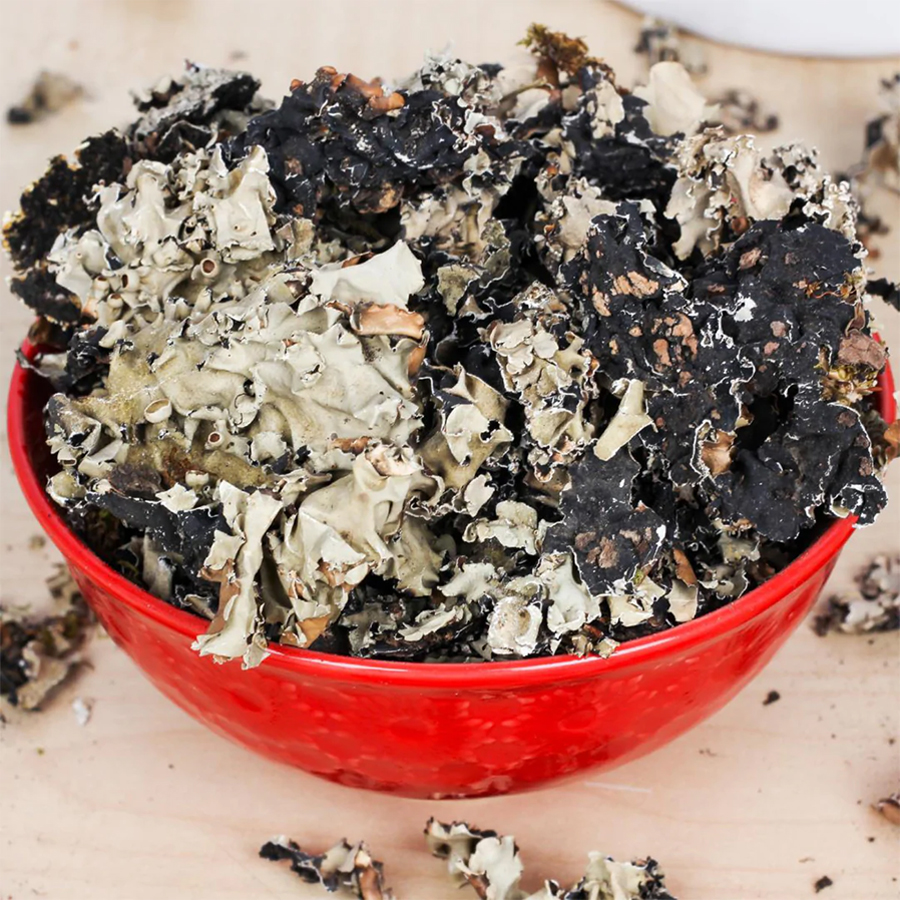Call Us Now(+234) 0905-639-2764
Black Stone Flower
Black Stone Flower
Stone flower, also known as Parmelia perlata, belongs to the family Parmeliaceae. It is a perennial lichen found on dead wood or rocks in the temperate Himalayas.1 It is frequently used as a spice for flavouring food items.
Ask for Quote The ethanolic extract of stone flower exhibited significant gastroprotective potential against alcohol, aspirin, cold restraint, and pyloric ligation induced gastric ulcer in a rat model. However, this study was conducted on animals, not humans. Therefore, we require more human studies to suggest the benefits of stone flower in managing gastric ulcers.
The acetone, ethyl acetate, and methanolic extract of the stone flower was studied to have significant antibacterial activity against Staphylococcus aureus. In addition, studies show the hydro-alcoholic extract of the stone flower was found to be significantly active against Pseudomonas aeruginosa, Bacillus cereus, Proteus vulgaris, Escherichia coli, S. aureus, Klebsiella pneumoniae, and Corynebacterium xerosis.
The polysaccharide fraction of the stone flower was investigated for cytotoxicity on cell lines, and it was found to possess specific antiviral potential against the yellow fever virus that attacks the viral envelope.
Parmotrema perlatum, commonly known as black stone flower, is a species of lichen used as a spice in India. The species occurs throughout the temperate Northern and Southern Hemispheres. Typically used in meat dishes like nihari (paaya), Bombay biryani, and goat meat stews, it is also used in vegetarian dishes.
By itself dagad phool is bitter. It tastes can be compared to being pungent & astringent. However, when added to a recipe and cooked it imparts a wonderful smoky flavour. Dry ground kalpasi has little or no smell and should be roasted in little oil to get its actual and full aroma
The acetone, ethyl acetate, and methanolic extract of the stone flower was studied to have significant antibacterial activity against Staphylococcus aureus. In addition, studies show the hydro-alcoholic extract of the stone flower was found to be significantly active against Pseudomonas aeruginosa, Bacillus cereus, Proteus vulgaris, Escherichia coli, S. aureus, Klebsiella pneumoniae, and Corynebacterium xerosis.
The polysaccharide fraction of the stone flower was investigated for cytotoxicity on cell lines, and it was found to possess specific antiviral potential against the yellow fever virus that attacks the viral envelope.
Parmotrema perlatum, commonly known as black stone flower, is a species of lichen used as a spice in India. The species occurs throughout the temperate Northern and Southern Hemispheres. Typically used in meat dishes like nihari (paaya), Bombay biryani, and goat meat stews, it is also used in vegetarian dishes.
By itself dagad phool is bitter. It tastes can be compared to being pungent & astringent. However, when added to a recipe and cooked it imparts a wonderful smoky flavour. Dry ground kalpasi has little or no smell and should be roasted in little oil to get its actual and full aroma
| origin | Sudan |
|---|---|
| Inco Terms | FOB |
| Moisture | 15% Max |
| Optical Rotation | (-25°) – (-35°) |
| PH | 4.0 – 4.8 |
| Viscosity | 30 – 200 cps |


